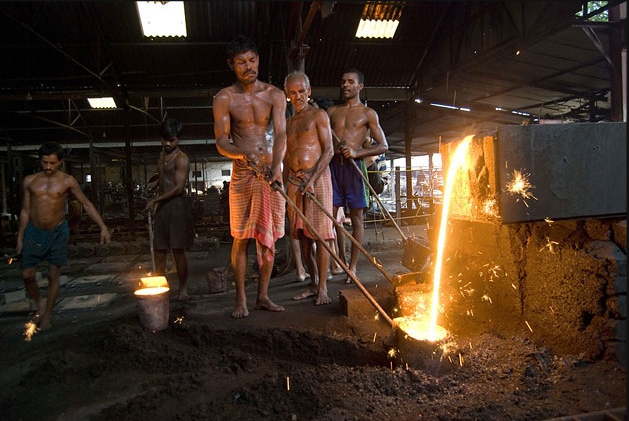»On manhole covers
Manholes have long fascinated me, and just a few days ago I noticed a large "Made in India" stamp on a ConEd manhole cover in Midtown. Today, the front page of the New York Times has a stunning photograph of a foundry with neat rows of naked men carrying buckets of molten metal to pour into moulds. The article and its accompanying photographs are stunning, reminiscent of Edward Burtynsky's beautiful industrial landscapes of shipbreaking in Alang. The author and photographer J Adam Huggins narrates a audiovisual slide presentation of his photographs.
The article raises questions about the ethical aspects of contracts between municipal agencies and employers who do not provide even the most basic safety equipment ("We canít maintain the luxury of Europe and the United States, with all the boots and all that,Ē said Sunil Modi, director of Shakti Industries. He said, however, that the foundry never had accidents.). I wonder, however, how many of the small pieces that make up our massive municipal machinery come from similar factories spread across Asia, Africa, and South America, where working conditions are not as closely governed or regulated as in the United States?
Several years ago I picked up a copy of Manhole Covers (which you can buy from Amazon), a coffee-table book with lavish over-size photographs of steam-pipe covers, access panels, and all manner of plates that fall under the heading of manhole cover. More recently, a friend gave me a copy of Designs Underfoot: The Art of Manhole Covers in New York City.


